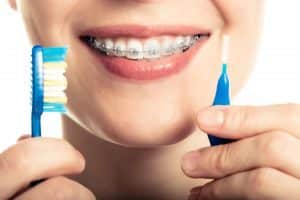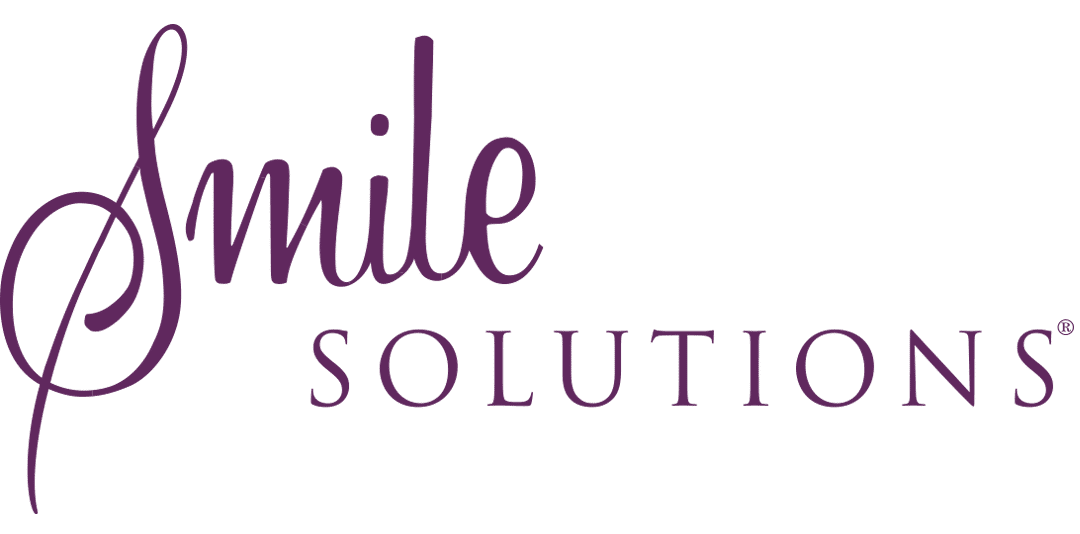Oral hygiene tips while wearing braces
Getting braces can be a very exciting time for children and adults alike, and before you know it you’ll be flashing your new radiant smile. There are a few things to keep in mind along the way to ensure that you reach the end of your orthodontic treatment with beautiful healthy teeth.
While you’re wearing braces, plaque and food particles can take advantage of all the additional places they have to accumulate around the brackets and wires. This accumulation can have many detrimental effects such as tooth decay, gum disease and bad breath.
Below are some easy guidelines to follow throughout your treatment to ensure you’re taking great care of your teeth when wearing braces.
Tooth brushing
Fluoridated toothpaste and a soft-bristled manual or electric toothbrush are ideal for cleaning braces. Using small circular movements, begin brushing at a 45-degree angle to the gum line. Then move to the brackets, angling down to reach on top of the brackets, and angling up to reach under the brackets. Don’t forget about the chewing and inside surfaces of the tooth as well. Sometimes it can be difficult to clean in between each tooth and bracket, therefore we usually recommend a small interproximal brush which can easily manoeuvre in these hard-to-reach areas

Quite often we see kids with expander plates or partial braces. The manual dexterity needed to brush effectively does not develop in children until around 10 years of age. Therefore, we hygienists recommend that parents keep watch at brushing times and assist when necessary to ensure a family of happy, healthy mouths.
Flossing
Creating a flossing routine is very important at all times. However it becomes vital for anyone wearing braces. Flossing helps dislodge food particles and plaque that may accumulate under the gum and would otherwise turn into calculus. It can also help reach small areas and spaces that your toothbrush may miss. If you have braces, it will take you a lot longer than normal to floss. Give yourself enough time to do a good job. Flossing is very important in reducing the chances of gum disease.
We recommend Superfloss, a three-component floss that makes flossing a little easier. Superfloss has a stiff end to floss under the braces, a spongy floss to clean around orthodontic appliances and in wide areas, and standard floss to clean below the gum line.
There is also an orthodontic flosser called the platypus flosser, which is a Y-shaped appliance with a handle and a piece of floss strung between the two sides. One end of the arm is flat, which allows you to slide it under the wire of your braces.
Finally, a floss threader is a stiff plastic spike with a loop where the floss is passed through. You use the threader to pull the floss under the wire so you can floss in the usual way.
All of the above products can be found in the dental section of your pharmacy or at your dental practice.
It is important to note that some younger children may not have the manual dexterity to floss their own teeth and may require some assistance from an adult.
Step by step: HOW TO FLOSS WHEN YOU HAVE BRACES
- Use a suitable aid to thread the floss under the wire of your braces.
- Wrap the floss around your middle fingers. You will use your thumb and index finger to move the floss up and down. Do not move the floss from side to side between the teeth because you could cut or hurt your gums.
- Move the floss through the contact point between two teeth. If the floss breaks as you bring it between the contact points, take another length of floss and bring it through the contact area again. That will usually dislodge the broken piece of floss.
- Hug the floss in a “C” shape around one tooth of the two teeth. Move the floss up and down and go below the gum tissue papilla (triangle-shaped gum). You will notice plaque coming out from between the gum papilla and the tooth.
- While keeping the floss between the teeth and below the contact, wrap the floss around the other tooth. Proceed to floss on the other side of the gum papilla.
- Let go of the floss and then, using your other hand, pull the floss out from your mouth.
- Now repeat the process for the next papilla.
- Make sure that you are systematic and start in one place of the mouth and move from one papilla to the next.
Interdental brushes
Interdental brushes are also an excellent tool for reaching around wires and brackets while wearing braces, and they can help easily dislodge food particles that may get caught at meal times. They should always be used in conjunction with brushing and flossing and do not replace the role of normal floss in reaching interproximal areas.
Disclosing tablets
Plaque can sometimes be difficult to see as it starts to build up on the teeth and around braces. One way to spot plaque is by using disclosing tablets once a week after brushing. The disclosing tablet stains plaque pink, making it easier to see and hence to remove with brushing. It is a great visual aid for brushing for children and adults alike.
Regular dental visits
With braces, you are more prone to developing gingivitis (gum disease). This is due to plaque and debris remaining around the braces and gums for long periods of time, which will start to cause the gums to swell and bleed. If left untreated this can lead to a more serious form of gum disease called periodontisis. It is very important to clean and massage the gums gently with your toothbrush.
Many patients are fearful of developing “squares” on their teeth when their braces are removed. These “squares” are called white spot lesions, and they develop when plaque has accumulated around the brace for long periods of time. The plaque begins to decalcify the tooth and these marks or stains are usually permanent. The only way to avoid these stains is to brush, floss and use your interproximal brush on a daily basis.
To assist in maintaining optimal oral hygiene we recommend that you continue with regular visits to your dental hygienist whilst undergoing orthodontics. They will make sure your teeth are healthy and clean, and can point out areas that may need more attention.
